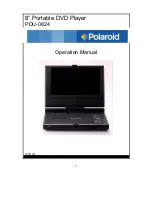
REV B46517-20110721
10
B46517
ENGLISH
Generator Location
Please consult your local authority . In some areas,
generators must be registered with the local utility .
Generators used at construction sites may be subject to
additional rules and regulations .
This generator must have at least five feet of clearance
from combustible material . Leave at least three feet
of clearance on all sides of the generator to allow for
adequate cooling, maintenance and servicing .
Place the generator in a well-ventilated area . DO NOT
place the generator near vents or intakes where exhaust
fumes could be drawn into occupied or confined
spaces . Carefully consider wind and air currents when
positioning generator .
Grounding
The generator system ground connects the frame to the
ground terminals on the power panel .
The generator (stator winding) is isolated from the frame
and from the AC receptacle ground pin . Electrical devices
that require a grounded receptacle pin connection may not
function properly .
Surge Protection
Electronic devices, including computers and many
programmable appliances use components that are
designed to operate within a narrow voltage range and
may be affected by momentary voltage fluctuations .
While there is no way to prevent voltage fluctuations, you
can take steps to protect sensitive electronic equipment .
1. Install UL1449, CSA-listed, plug-in surge suppressors
on the outlets feeding your sensitive equipment.
Surge suppressors come in single- or multi-outlet
styles . They’re designed to protect against virtually
all short-duration voltage fluctuations .
Voltage fluctuation may impair the proper
functioning of sensitive electronic equipment .
CAUTION
OPERATION
Starting the Engine
1 . Make certain the generator is on a flat, level surface .
2 . Disconnect all electrical loads from the generator .
Never start or stop the generator with electrical
devices plugged in or turned on .
3 . Turn the Fuel Valve to the “ON” position .
4 . Flip the ignition switch to the “ON” position .
5 . Move the choke lever to the “CHOKE” position .
6 . RECOIL START: Pull the starter cord slowly until
resistance is felt and then pull rapidly
7 . Do not over-choke . As as soon as engine starts, move
the choke lever to the “RUN” position .
If the engine starts but does not run make certain
that the generator is on a flat, level surface . The
engine is equipped with a low oil sensor that will
prevent the engine from running when the oil level
falls below a critical threshold .
NOTE
Keep choke lever in “Choke” position for only 1
pull of the recoil starter . After first pull, move choke
lever to the “Run” position for up to the next 3
pulls of the recoil starter . Too much choke leads to
sparkplug fouling/engine flooding due to the lack of
incoming air . This will cause the engine not to start .
NOTE














































